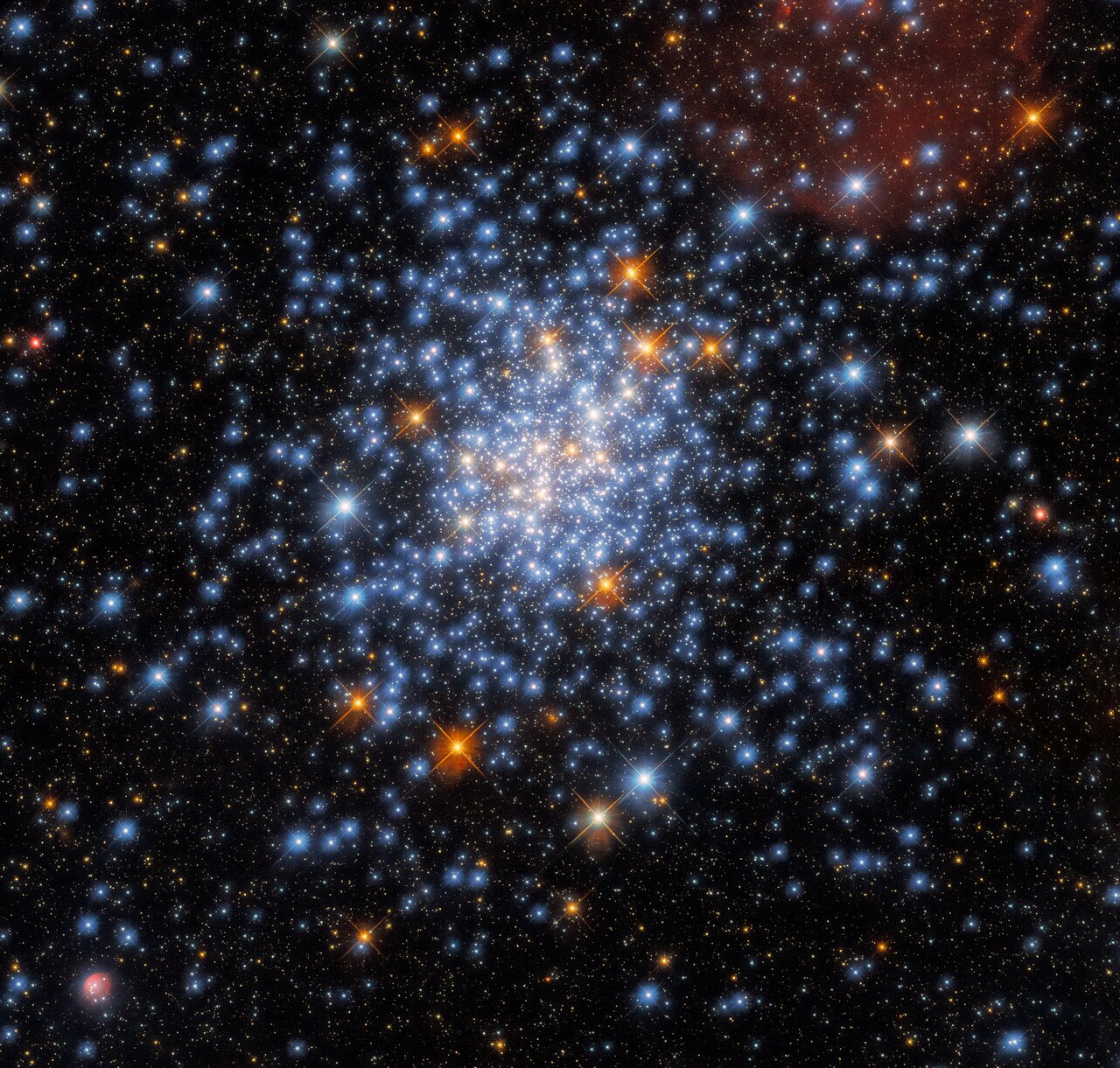The Cosmos with NGC 330
This Picture of the Week depicts the open star cluster NGC 330, which lies around 180,000 light-years away inside the Small Magellanic Cloud. The cluster — which is in the constellation Tucana (The Toucan) — contains a multitude of stars, many of which are scattered across this striking image. Pictures of the Week from the NASA/ESA Hubble Space Telescope show us something new about the Universe. This image, however, also contains clues about the inner workings of Hubble itself. The criss-cross patterns surrounding the stars in this image — known as diffraction spikes — were created when starlight interacted with the four thin vanes supporting Hubble’s secondary mirror. As star clusters form from a single primordial cloud of gas and dust, all the stars they contain are roughly the same age. This makes them useful natural laboratories for astronomers to learn how stars form and evolve. This image uses observations from Hubble’s Wide Field Camera 3, and incorporates data from two very different astronomical investigations. The first aimed to understand why stars in star clusters appear to evolve differently from stars elsewhere, a peculiarity first observed by the Hubble Space Telescope. The second aimed to determine how large stars can be before they become doomed to end their lives in cataclysmic supernova explosions. Links Video of A Scattering of Stars
